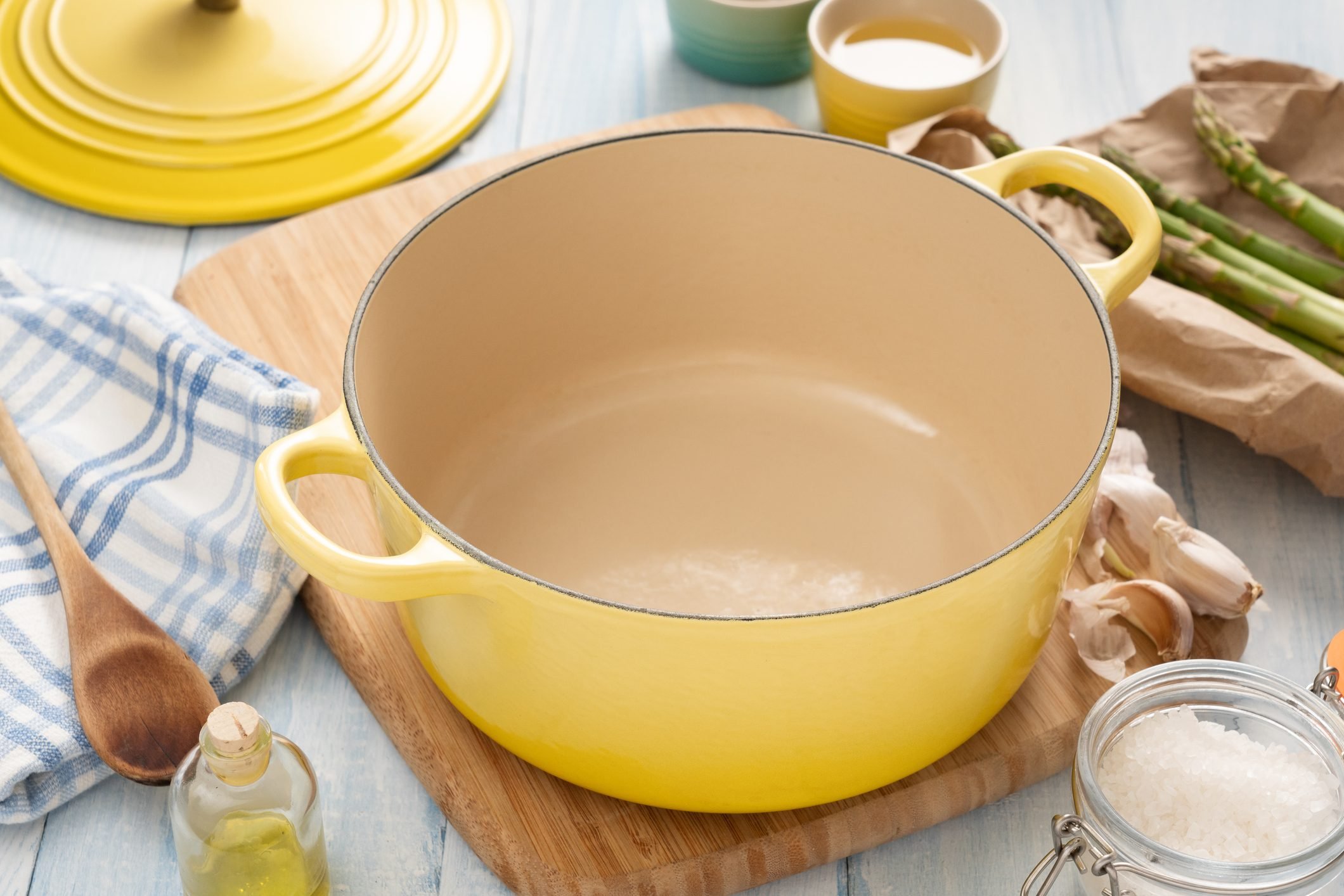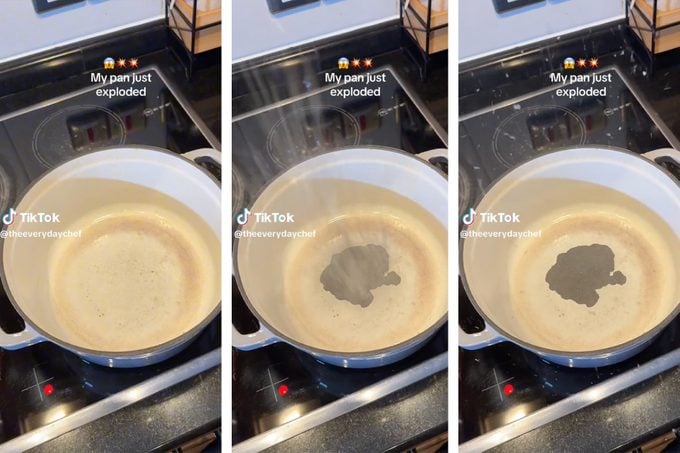Dutch ovens, like a Le Creuset or a Lodge, will last forever—as long as you know how to treat them.

The Dangerous Mistake You Could Be Making with Enameled Cast Iron

There’s no limit to what a good Dutch oven can do in the kitchen. The true workhorse of the home chef, this enameled cast iron pot is excellent at conducting and retaining heat for any number of recipes, whether you’re cooking on the stovetop or in the oven. However, there’s one thing to know about how to properly preheat enameled cast iron, as one TikTok user learned when the bottom of her Dutch oven apparently exploded on the stovetop.
What is enameled cast iron?
Le Creuset is the most famous example of an enameled cast iron pan, but other companies make them, including Lodge, KitchenAid and Staub. In many ways, it’s an improvement on the classic non-enameled cast iron skillet, which must be regularly seasoned to maintain its nonstick quality and avoid rusting. The enamel coating prevents rust, doesn’t require seasoning and helps the pan last a lifetime.
Be mindful of that helpful enamel coating, though. It can get chipped and scratched if it comes into contact with abrasive cooking tools or dish scrubbers. And when enameled cast iron is exposed to extreme temperature changes, it can cause thermal shock and rupture the pan. That’s the explosion we’re concerned about.
Can you preheat enameled cast iron?
You can absolutely preheat enameled cast-iron pans, but it’s crucial to do it the right way. According to the Lodge website, there are two options for preheating an enameled pan. First, you can preheat it dry and empty in the oven, where the indirect heat circulates evenly all around the Dutch oven. Second, you can preheat it on the stove with water or oil covering the bottom of the pan. If using the latter method, don’t crank the heat up immediately. Lodge recommends starting with low heat and building from there.
What happens if you preheat an empty Dutch oven?

In the TikTok video of this kitchen mishap, the pan evidently explodes because it’s being preheated on the stove, on high heat, while empty. The burners on a stovetop, whether gas or electric, create an intense, localized heat that makes direct contact with the bottom of the Dutch oven. This can cause thermal shock and, as seen in the video, ruin the cookware.
However, these explosive results don’t happen when the pan has liquid in the bottom, because the liquid distributes the heat more evenly across the vessel. Starting with a low heat and building it up slowly can also mitigate the risk of thermal shock.
At least this TikTok cooking fail is teaching plenty of other home cooks about what mistakes to avoid!


















